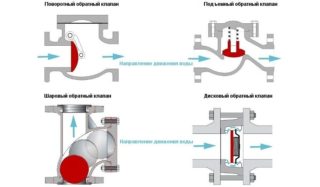As a result of improper installation or operation, solid waste accumulates in the sewer pipe and a blockage occurs. The spent liquid does not enter the septic tank, but returns back to the house and heats the room. To prevent this from happening, it is recommended to install a small and inexpensive device - a check valve that prevents drains from entering the house.
What is a sewage check valve
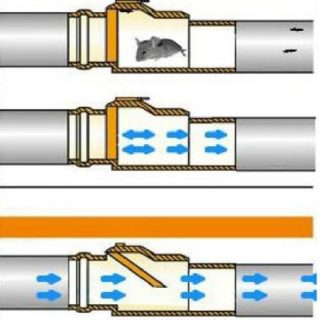
A blockage situation can arise in an apartment building and a private house where the slope of the sewer pipe is not observed or plastic bags and rags are thrown into the toilet bowl. In high-rise buildings, trash jams can form between floors, so residents are in danger of flooding the bathroom with sewage from the upper floors.
A sewage check valve is a device that, at the right time, prevents the backflow of waste liquid into the room. Due to the simple principle of operation, water can only move in one direction - from the room. This is facilitated by the pressure created by the fluid that comes from the inside.
Scope of application
Check valves are used in pressure and gravity sewers and water mains. Basically, sewage systems are made by gravity, but if the pipes cannot be laid at a slope, the liquid will go out more slowly, the likelihood of blockages will increase.
In pressure lines, a check valve is installed immediately after the pump so that sewage or drinking water does not flow back. It is recommended to install such devices in wells or wells. During operation, the check valve, or rather, its movable mechanism, also clogs over time. Therefore, it is necessary to provide for its installation in such a way that it can be disassembled and cleaned at any time.
In private houses, mice or rats can enter the room through the sewer pipes. The check valve prevents this.
The shutter mechanism is installed in those places of the sewage system where the pipe is turned at right angles. This is considered an installation error, but in some cases it is impossible to turn in another way, therefore additional protection against clogging is put in the form of a shut-off membrane.
The check valve can be omitted if people live on the top floor in a multi-storey building.
Types of check valves and principle of operation
- At the place of installation - indoor or outdoor. For outdoor use, frost-resistant materials are chosen; the valve must have a large flow capacity.
- According to the method of installation - coupling, flanged and interflanged. Coupling valves are installed indoors on small-diameter pipes. Flanged varieties are suitable for street sewers where large diameter pipes are used. Fitting wafer valves requires the use of welding.
- By the type of locking device - ball, lifting and swivel. In the rotary design, a damper is used, in the ball design, a sphere is used to prevent the return flow of drains. The lifting model works on a spring or under the influence of its own weight.
Each variety has its own advantages and disadvantages.Wafer models are inconvenient to repair and clean, while rotary models have a cover on top that can be unscrewed and removed to remove clogging. Plugs are more common in the lifting device, but they are easier to clean as the device also has a removable cover. The ball mechanism is less clogged, but sometimes drains still seep in the opposite direction. The fountain from the toilet does not cause such an amount of liquid, so the model can be recommended as optimal.
Before buying, you need to analyze the quality and condition of your own sewage system, as well as the size of the pipes. They take into account:
- Line diameter. The cross-section of the inlet openings of the shut-off valve must match the pipe diameter.
- Manufacturing material. For a polymer system, a plastic device is more suitable - in terms of quality and price. Due to the difference in thermal expansion, polymers are not installed on a cast iron or steel line, so that leaks do not occur.
- Installation method. For example, a steel pipe and a plastic valve can be connected only in a flanged or coupling way, depending on whether the pipes are vertically or horizontally located.
- Fixture size. For an external sewage system or a common riser, larger models are chosen. For each individual plumbing fixture, a small device is enough.
The price of the product does not play a special role. It all depends on the state of the sewage system. You should not buy an expensive model of a shut-off valve for an old sewage system, which will soon have to be changed.
Manufacturing materials
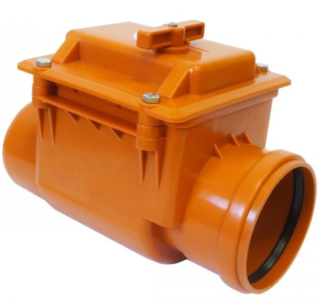
It is advisable to install a check valve made of the same material as the sewer pipes, so as not to spend money on additional adapters. If the sewage system is being made from scratch, all the necessary parts are immediately selected.
Materials from which the valves are made:
- stainless steel;
- cast iron;
- bronze or copper;
- polymeric materials - PVC, polypropylene, metal-plastic.
The cheapest and most convenient are plastic models. Moreover, their installation takes a minimum of time. It is necessary to take into account not only the material, but also the availability of space for the locking mechanism. There are vertical and horizontal devices. If there is no room for a horizontal structure, which is used most often, you have to install a vertical one.
It is not recommended to attach a heavy cast iron valve to the plastic pipeline, as this may damage or collapse the pipeline.
Stainless steel
Suitable for installation on outdoor sewerage and water supply systems. It has a long service life, as it does not corrode. The walls of the device are smooth, so organic matter does not have time to accumulate inside. Recommended for heavy street roads with increased ground loading.
Cast iron
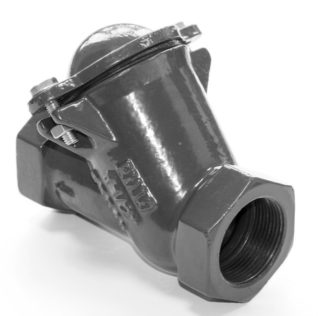
A material that has several modifications. Previously, only products with rough walls were produced, so pipes and all other parts had to be cleaned often. At the moment, you can pick up products that have a smooth inner surface and do not require frequent maintenance. Cast iron structures are the heaviest of all, so they are most often placed on city highways.
Polymer check valves
Since most private self-contained systems are made of plastic, check valves must also be of the same quality. The most common are PVC and polypropylene. There are also metal-plastic and polyethylene products on sale. They differ in operating conditions:
- Waste water temperature. To drain the waste liquid from the bath, you need a material that will withstand hot temperatures and not deform at the same time.
- Ambient temperature if the product is intended for outdoor sewerage.
- Type of fluid transported. For domestic wastewater, the simplest material is sufficient, but chemically inert materials must be installed to remove aggressive substances.
The coefficient of thermal expansion of the materials should be practically the same if the check valve is from one raw material and the pipes are from another.
Check valve dimensions
In the internal sewerage system, sizes of 50, 100 and 110 mm are most often used. 50 mm - sinks, bathrooms, washing machines and dishwashers, 100 and 110 mm - for toilets. The most common model is ARV1.
For external systems, parts are produced with a section suitable for the diameter of the pipes for which they are intended - 160, 200, 250, 315 mm.
Installation rules
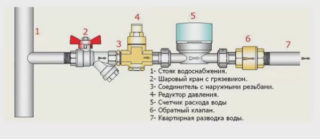
It is most convenient to install a sewage check valve at the stage of installing the entire system. In this case, it is easier to choose a location and calculate the dimensions. But there are times when everything is already mounted, and then you have to put a locking mechanism. In such a situation, proceed as follows:
- They buy a part based on the actual sewer pipes made of a certain material, taking into account the diameter.
- Check the valve with water so that it only passes in one direction.
- Choose a place for installation in such a way that it is convenient to carry out an audit.
- Read the instructions supplied with the product.
- Cut a section of the pipe along the length of the locking mechanism.
- Install the valve according to the instructions and the direction of water movement, focusing on the arrow. At this stage, you will need a sealant or special sealing tape so that the joints do not leak.
After installation, check the operation of the device. If nothing flows, you can exploit it. During operation, it will be necessary to periodically clean the valve through the inspection hole. The instructions indicate the operating time of the internal parts, so it is advisable to change them on time.
Check valves cost
The cost of a check valve depends primarily on its size and material of manufacture. A large cast-iron sewer element will cost about 10 times more expensive than a plastic one of the same size - from 8 thousand rubles apiece. A stainless steel valve is a little cheaper. A conventional pipe valve for a toilet bowl with a diameter of 110 mm costs 9-10 thousand rubles.
The configuration of the device matters. Wafer is more difficult to install, but cheaper.
Consumer reviews
Ivan: I had a history with these valves. We bought an apartment and did not ask why the previous owner lived there for only 2 years and started selling it. We made repairs in the bathroom, in the hallway, put in a new laminate. After 4 months we decided to go to the sea. We come home, and there is a flood in the apartment. Yes, not anyhow, but a real fecal. Laminate flooring cannot be restored, apparently not the first day it started flowing. We all understood why the previous tenant moved out. We went to the neighbors with a proposal to change the pipes and the entire system. And they do not need anything to anyone - after all, only us were flooded. I had to re-buy building materials, ventilate the room. Before that I consulted with a friend - he works in plumbing. He said to put check valves everywhere. We put it in, made repairs, we live. Suddenly, in the middle of the night, a knock on the door - the neighbors on the second floor are drowning. Nothing got to us because of these valves, but it sailed to them in full. I recalled to them how I offered to change everything and went to sleep peacefully. As a result, the neighbors on the second floor made repairs, installed the same device and warned the neighbors on the third floor in advance that they were next in line. A week later, a meeting of residents was announced with a proposal to change the sewerage system. They changed, but I did not remove the valves just in case.

